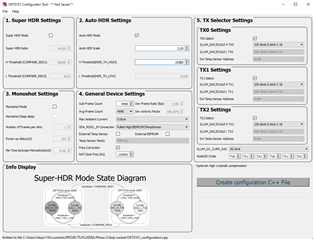Hello Alex,
We are using a custom board based on the OPT3101 IC in which the three illumination channels are used. The SDK is being used to calibrate the board and also to measure. The num_sub_frames and num_avg_sub_frames are configured to be 4096. The tx sequence defined is TX0-TX1-TX2-TX0-TX1-TX2. When the TESTING_LIVE_VIEW is run, the three LEDs light up when it is their turn but only data from one LED is shown in the terminal until there are approximately 30 samples obtained. At this point another channel starts showing measurements and the same happens with the third channel when 80 samples are obtained. We would like to understand the OPT3101 behavior when three illumination channels are being used because now our sensor does not respond to new targets until more or less 30 measurements are taken (taking into account that the time between sample and sample is 0,98 seconds).
Best regards,
Olga


